- Home
- Paula Byrne
The Real Jane Austen Page 4
The Real Jane Austen Read online
Page 4
Though Jane Austen was to return to the theme of the adopted child in Emma, there she does not enter the mind of the child as she does in Mansfield Park. In that novel, Fanny’s transference into the great house is a blessing and a final redemption, especially to Sir Thomas: ‘Fanny was indeed the daughter that he wanted. His charitable kindness had been rearing a prime comfort for himself. His liberality had a rich repayment.’32 The child of the impoverished branch of the family redeems the materially more prosperous but morally bankrupt household. By accepting Fanny, the Bertrams become more human.
Mansfield Park is not a retelling of the story of Jane Austen’s wealthy relatives, the Knights of Godmersham Park. Her brother Edward Austen, who became Edward Knight, is not the ‘original’ of Fanny Price. But the theme of the bond between branches of a family with very different prospects came close to Austen’s own experience. The liberality of the Knights eventually made it possible for her to become a novelist. Mrs Knight, her only patron, was described by her as ‘gentle and kind and friendly’.33 And, crucially, it was through the Knights that Edward was to give his mother and sisters a home. Had he not been adopted, he would not have grown up to inherit the great house at Chawton, from where he was able to give his poor relations the modest property near by in which Jane lived the last eight years of her life and wrote her novels.
2
The East Indian Shawl
Shawls had been hand-woven in Kashmir since the eleventh century. The finest examples were made under Mughal patronage to be worn at court or presented as ostentatious gifts. They could take many months to complete, requiring the skills of spinners, dyers, pattern designers, craftsmen responsible for arranging the warp and weft, weavers and finishers. The best were made from the underbelly fleece of the wild central Asian goat, whereas pashmina, second-grade wool, came from domesticated goats. Many such shawls were brought back to Europe, where they became a popular fashion item in Jane Austen’s lifetime. Western demand duly affected Kashmiri production: by the time the shawl illustrated here was made, the classic boteh design, derived from flowering plants, had become more formal and stylized. This particular ‘moon shawl’ is square, like most Kashmir shawls, and was intended to be worn over the shoulders.
In January 1772, Jane Austen’s Aunt Phila was sent ‘a piece of flowered shawl to make a warm winter morning gown’ from her husband, who was living in Calcutta.1 Seventy years later, Jane Austen’s sister Cassandra mentioned in her last testament ‘a large Indian shawl’. It had once belonged to the woman she had hoped would become her mother-in-law.2 Jane Austen herself once gave a shawl to a Steventon neighbour. She observed her niece Cassy in a fine red shawl and a Bath acquaintance in a yellow one.3 And in her house at Chawton today the visitor can still see a cream silk shawl that was a gift to her from Catherine Knight, her brother Edward’s adoptive mother.
‘Fanny,’ says Lady Bertram in Mansfield Park, ‘William must not forget my shawl, if he goes to the East Indies; and I shall give him a commission for any thing else that is worth having. I wish he may go to the East Indies, that I may have my shawl.’ She hesitates for an instant, then ends with characteristic indulgence: ‘I think I will have two shawls, Fanny.’4
When Jane Austen saw or wore or wrote about an Indian shawl, she entered a whole new realm of cross-cultural exchange, a world far from that of her own Hampshire village. Through her family connections, she became aware of that wider world and it entered subtly into her imagination, shaping her novels to a far greater extent than is often realized. Thanks in particular to a charismatic female cousin, there is a thread connecting Jane Austen to places we do not usually associate with her: not only the East Indies, but also the streets of revolutionary Paris.
The East India Company, with its many trading activities, was developing into a significant economic and political force within the global economy. Cottons and silks, indigo dyes and spices, not to mention diamonds and opium, were imported in vast quantities. As goods came west, so people went east. The Indies became the place to make your fortune when hope was lost at home.
A young woman, an orphan called Cecilia Wynne, leaves her home in England for Bengal. Her journey to the East Indies takes six months, the passage fraught with dangers and privations. She is going with one object in mind: to find a husband. Left penniless by her father, she is travelling at the behest of a rich relation who is eager to marry her off. The girl’s younger sister, also destitute, has been offered a placement as a lady’s companion in England.
When Cecilia arrives in the East Indies, her good looks ensure that she soon finds a rich husband. He is older than her, and very respectable: she is considered to be ‘splendidly but unhappily married’. Back in England Cecilia is regarded by those who know her as a lucky girl. All except one friend, who harbours no such romantic illusions: ‘Do you call it lucky, for a Girl of Genius and Feeling to be sent in quest of a Husband to Bengal, to be married there to a Man of whose Disposition she has no opportunity of judging till her Judgement is of no use to her, who may be a Tyrant, or a Fool or both for what she knows to the Contrary. Do you call that fortunate?’ Another girl replies, cynically, ‘She is not the first Girl who has gone to the East Indies for a Husband, and I declare it should be very good fun if I were as poor.’5
This story is fictional. It is called ‘Catharine, or the Bower’ and it was written by the young Jane Austen in 1792 when she was sixteen. But the facts of the story replicate almost exactly the fate of her own aunts: Philadelphia, elder sister of the Reverend George Austen, did indeed go to the East Indies for a husband, while Leonora, his younger sister, became a lady’s companion at home in England. Even in her teens, the young Jane Austen was preoccupied with the hardships faced by women reduced to a state of absolute dependence on relations who often prove to be unkind and unfeeling. Her interest in the plight of impoverished women and the harsh realities of the Georgian marriage market never left her. She once advised her niece Fanny that ‘Single Women have a dreadful propensity for being poor – which is one very strong argument in favour of Matrimony.’6 The women sent out to the East Indies to find husbands because they had no dowry and little chance of finding an English match were but extreme examples of a widespread phenomenon.
So what was the story of these three children – Philadelphia, known to the family as Phila, George and Leonora – born in rapid succession in May 1730, May 1731 and January 1733? It is a tale of siblings separated, an uncaring stepmother and the prospect of penury or worse.
Perhaps one of the reasons why George Austen grew up to become such a loving, kind and attentive father, and to fill his house with children, was that his own childhood had been one of neglect and misery. His mother, Rebecca, died shortly after giving birth to Leonora. Their father, William Austen, a surgeon, remarried, but he too soon died. Little George was just six.
The stepmother was not interested in the three young children. William Austen’s will had established his two brothers as trustees for the orphans. One of these uncles, Stephen, was a bookseller at St Paul’s in London. He and his wife took in their nephew and two nieces. According to family tradition, the children were neglected, even mistreated.7 But one can never be entirely sure how much to trust what one branch of a family says about another. The neglect cannot have been total, since little Leonora stayed in the household. Presumably she would have had the same kind of status as Fanny Price at Mansfield Park. Hardly anything is known of her later life, other than that she became a lady’s companion. George, meanwhile, was sent to live with an aunt at Tonbridge in Kent. He went to the long-established school there and proved himself a clever boy, winning a scholarship to Oxford.
Philadelphia did not have such educational opportunities. When she was fifteen, she was apprenticed to a milliner in Covent Garden. She would have been set to work making shirts and shifts, aprons and neckerchiefs, caps and cloaks, hoods and hats, muffs and ruffles, trim for gowns. Apprentice milliners led tough, unhealthy lives with long hours
and poor conditions. Many of them died young, but there was always a stream of young girls available to take their place. Some, especially those as attractive as Phila, were tempted or forced into another profession. The term ‘Milliner of Covent Garden’ was slang for a prostitute. In that part of London, the dividing line between different kinds of working girl was very thin.
Phila needed to get out. Having finished her apprenticeship and come of age, she inherited her small portion from her father’s estate. In November 1751, she made a bold move, petitioning the Directors of the East India Company for leave to go to India aboard their ship, the Bombay Castle.
She set sail on 18 January 1752, together with ten other ‘young beauties’. They all had the same ambition: to find a husband among the lonely white businessmen, soldiers and administrators who worked in the East Indies. In the colloquial language of the English in Bengal, women of this kind would become known as ‘the fishing fleet’.
One of the other girls, Mary Elliott, had named the same two gentlemen as Phila in the role of ‘sureties’ to support her application, so it may be assumed that they were friends before they went aboard. Another, who would also become a good friend to Phila, was Margaret Maskelyne. Only sixteen, the orphaned and impoverished daughter of a minor civil servant, she was escaping a life of boredom with her maiden aunts in Wiltshire. The army had taken her wild brother Edmund to India and he reckoned he had lined up a match for her: a letter had arrived in England with the information that he ‘had laid out a husband for Peggy if she chooses to take so long a voyage for one that I approve of extremely, but then she must make haste, as he is in such a marrying mood that I believe the first comer will carry him’.8
The beauties bound for Bengal finally arrived at Madras Harbour in early August. All eleven had survived the conditions aboard ship, described by Jane Austen as ‘a punishment that needs no other to make it very severe’.9 Many people died in the passage. What must it have been like for these girls? Homesickness at leaving England coupled with the terrors of the voyage, seasickness, weeks upon weeks of cramped conditions, stink from the bilge, coldness on deck and heat below. Always the threat of shipwreck. If the girls were wealthy they could be wined and dined by the captain, but this came at a high price and many East India captains charged exorbitant sums and steep rates of interest if credit was required. The captains also acted as general suppliers of goods such as clothes, delicacies, even furniture, which they sold both to their passengers and to the inhabitants at their destination.
Their first sight of India was the long, low line of the Coromandel Coast. The contrast in journeying from a freezing English mid-winter to August in Madras (now Chennai) can readily be imagined: the heat and humidity, but also the glorious mountains and sea, the white buildings, the endless sky, the smell of Madras, with its mixture of hot dust, burnt dung and spices. From the deck, as the hot breeze hit them, they saw the battlements of Fort St George, with the steeple of St Mary’s Church rising gracefully behind it. The church was a brilliant white, the surface covered with chunam, a cement that was made of burnt sea-shells. It glowed in the setting sun. To the right of the Fort was the native or ‘Black Town’, to the left was the old Portuguese settlement of Thome. Surrounding it all was golden sand and green palm-trees.10
The girls were taken to the Sea Gate of the Fort in a flimsy masula boat. From there, they would be swept into a whirl of concerts, balls and picnics. Their quest for husbands was under way. Margaret Maskelyne was duly introduced to the man her brother had lined up for her. He was the Governor of Bengal, and within six months she had married him. He would go on to achieve fame under the name Lord Clive of India.
In 1745, the year when Phila began her apprenticeship in Covent Garden, a man called Tysoe Hancock, seven years her senior, set sail for the East Indies. Hancock held the post of Surgeon Extraordinary for the East India Company in Madras, but he was also involved in the shipment of diamonds and gold. And he was in search of a wife. He knew all about both the prospects and the perils faced by the ‘fishing fleet beauties’. ‘You know very well’, he wrote in a letter, ‘that no Girl, tho’ but fourteen Years Old, can arrive in India without attracting the Notice of every Coxcomb in the Place, of whom there is very great Plenty at Calcutta, with very good Persons and no other Recommendation … Debauchery under the polite name of Gallantry is the Reigning Vice of the Settlement.’11
Phila’s wealthy uncle Francis, a well-to-do gentleman who made his money practising law and buying land at Sevenoaks in Kent, was Tysoe Hancock’s lawyer and business agent. This connection brought them together. In February 1753, just over six months after her arrival in India, Jane Austen’s aunt became Mrs Tysoe Hancock. At Fort St David, where she settled down to married life, she must have felt a million miles away from her days as a penniless seamstress for fine ladies. She was now the mistress of a large household of servants, including personal maids called Diana, Silima, Dido and Clarinda. She wore fine silks and muslins. The garden, shaded by rows of the evergreen tulip tree, was full of pineapples and pomegranates. The only thing she lacked was a baby. After six years of marriage the couple still remained childless.
In 1759 they moved to Fort William in Calcutta, at the request of Lord Clive. Here they became part of the elite British Bengal community, meeting and befriending Warren Hastings. Hastings had joined the East India Company in 1750 as a clerk, and by 1773 he would rise to become the first Governor-General of India. Hastings and Hancock entered into a business relationship, trading in salt, timber, carpets, rice and Bihar opium. Phila was reunited with her friend from the voyage out, Mary Elliott. She too had succeeded in making a quick match soon after arriving, but it had ended abruptly when her husband had the misfortune of being among the British soldiers who died when incarcerated in the Black Hole of Calcutta. With rather indecent haste, Mary married Warren Hastings just a few months later. In December 1757, she gave birth to a son called George. Then in 1758 she had a daughter called Elizabeth, who did not survive. The friends who had once been part of the fishing fleet did not have long together, for Mary Hastings died in July 1759, just weeks after Phila had moved to Calcutta.
Calcutta was grander and more luxurious than the Coast. Great mansions resembling Italian palazzi lined the river front. It was more like a European city than Madras, as its houses and public buildings were not all crammed into the confines of the Fort but were mingled on the streets of the town itself. Armenians mixed with Portuguese, providing the English with cooks and servants. Many of the English lived in large one-storey villas reached by outdoor stairs, boasting handsome verandas on which to sit in the cool of the evening. Walls were not papered but whitewashed and, the climate being too hot for carpets, the floors were covered in matting. The rooms were large, cool and airy, furnished with European imports. Many of the English had a ‘garden-house’ out of town, where they retired at the weekends, escaping the intense heat of the city. Siestas were necessary, the heat being so great that the ladies would retire wearing ‘the slightest covering’. Only in the cool of the evening would everyone dress in their finery and go out into society. One of the most popular meeting places was Holwell’s Gardens, where the British gathered together for supper parties and for their children to play. In early 1761 Philadelphia discovered that she was at last pregnant.
Phila’s new life could hardly have been more different from that of her brother George, Jane Austen’s future father. After Oxford, he was ordained deacon and became a master at his old school in Tonbridge. After his second ordination, as a full clergyman, in 1755 he resigned his schoolteaching post and returned to Oxford where he became assistant Chaplain at St John’s College.
In 1762, George Austen met Cassandra Leigh. They married two years later and were accompanied on their honeymoon by a sickly seven-year-old boy called George Hastings. The worlds of India and England were colliding again: the first child to come into the household of Jane Austen’s father was the son of Warren Hastings.
Ja
ne Austen’s aunt Phila
George Hastings had been sent to England in 1761, at the time when Phila Hancock was pregnant. He was initially entrusted to the Leigh family of Adlestrop, who were old friends of Warren Hastings. In this sense, he came as part of the marriage package when George Austen proposed to Cassandra Leigh. George was rewarded with a salary from Hastings, and expenses incurred on behalf of the boy were reimbursed. After the honeymoon, the boy moved in with the newly married couple at the parsonage in Deane, Hampshire, where the Reverend George Austen had been granted a living. But the boy was in very poor health. He died of diphtheria in the autumn. According to family tradition, Cassandra Austen reacted as badly as if George had been her own child.
Meanwhile in Calcutta, sister Phila’s seven barren years came to an end. On 22 December 1761, she finally gave birth to a daughter. This was Eliza Hancock, the little girl who would bring colour, danger and excitement into Jane Austen’s world.
The Austen family still possesses an Indian rosewood writing desk that, it is said, was given as a present by Warren Hastings to Phila Hancock, in order to thank her for nursing his dying wife. The gossip among the British in Calcutta was that Phila had very quickly become much more than a nurse and a friend. It appears to have been an open secret in the community of the East India Company that Eliza was the illegitimate daughter of the great Warren Hastings. He was her acknowledged godfather, and Eliza was named after Hastings’s daughter Elizabeth who had died in infancy. She in turn would name her only child, a son, after him: Hastings.

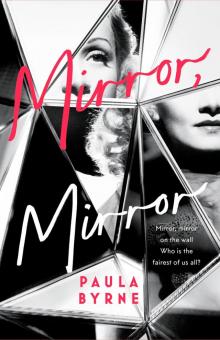 Mirror, Mirror
Mirror, Mirror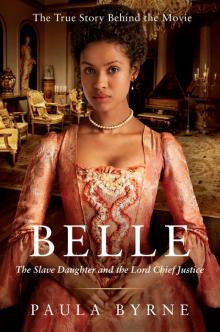 Belle
Belle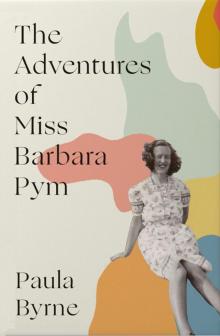 The Adventures of Miss Barbara Pym
The Adventures of Miss Barbara Pym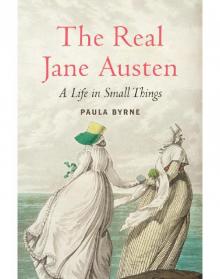 The Real Jane Austen
The Real Jane Austen Look to Your Wife
Look to Your Wife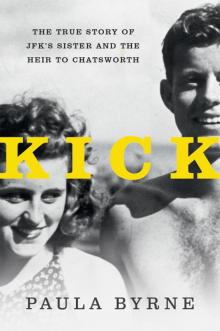 Kick
Kick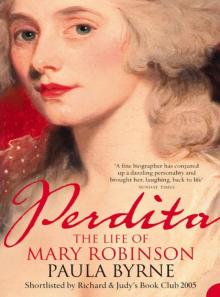 Perdita
Perdita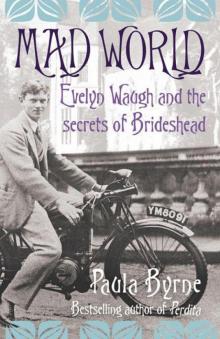 Mad World: Evelyn Waugh and the Secrets of Brideshead (TEXT ONLY)
Mad World: Evelyn Waugh and the Secrets of Brideshead (TEXT ONLY)